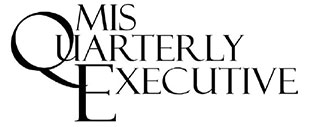Home > Journals > AIS Journals > MISQE > Vol. 5 (2006) > Iss. 3

Abstract
In 1990, 1995, 2000, and 2005, the authors held focus groups with IT leaders from about 15 companies, asking the question, “What will the IT organization look like five years from now?†Each participant was asked to comment on the previous session’s predictions and give their predictions for the next five years. This article presents the 2005 focus group’s predictions. Three previous papers have discussed the 1990, 1995, and 2000 focus group predictions.The 2005 focus group foresaw changes to IT from 2005 to 2010 in 10 areas: * The mission of the IT organization will change from fostering business transformation (in 2005) to fostering business intelligence (helping the enterprise know more about itself and its environment in 2010). * The role of the IT function will change from strategy mobilization (carrying out business strategy in 2005) to strategy collaboration (collaborating with the business in formulating strategy in 2010). * IT’s management style will change from anticipatory (i.e., trying to anticipate business strategy (which was predicted in 2000 but did not materialize by 2005) to architectural (creating the appropriate enterprise, process, and information frameworks to enable flexibility in 2010). * IT’s self-image will change from seeing itself as a catalyst for new forms of business value (in 2005) to becoming an enterprise leader in business transformation and innovation (in 2010). * The focus of IT governance will change from creating a federated network (based on the adoption of external and open standards in 2005) to true horizontal integration (using these standards for competitive advantage in 2010). * Internal IT controls will change from focusing on adding business value (in 2005) to adding enterprise value (in 2010). * IT staffing priorities will change from emphasizing business technologists (staff with business and technical competencies in 2005) to business-technology “conductors†(leaders with IT and business skills who can coordinate complex initiatives involving many different participants in 2010). * System development will change from assembly (in 2005) to orchestration of solutions (in 2010). * Hardware and software management will change from a minefield (with a multiplicity of proprietary offerings in 2005) to standardized (based on open standards in 2010). * IT’s impact on the workplace will change from fostering a boundaryless enterprise workplace (in 2005) to a flexible workplace (with virtual and brick-and-mortar complementing each other in 2010).
Recommended Citation
Smith, Heather A. and McKeen, James D.
(2008)
"IT in 2010: The Next Frontier,"
MIS Quarterly Executive: Vol. 5:
Iss.
3, Article 4.
Available at:
https://aisel.aisnet.org/misqe/vol5/iss3/4

